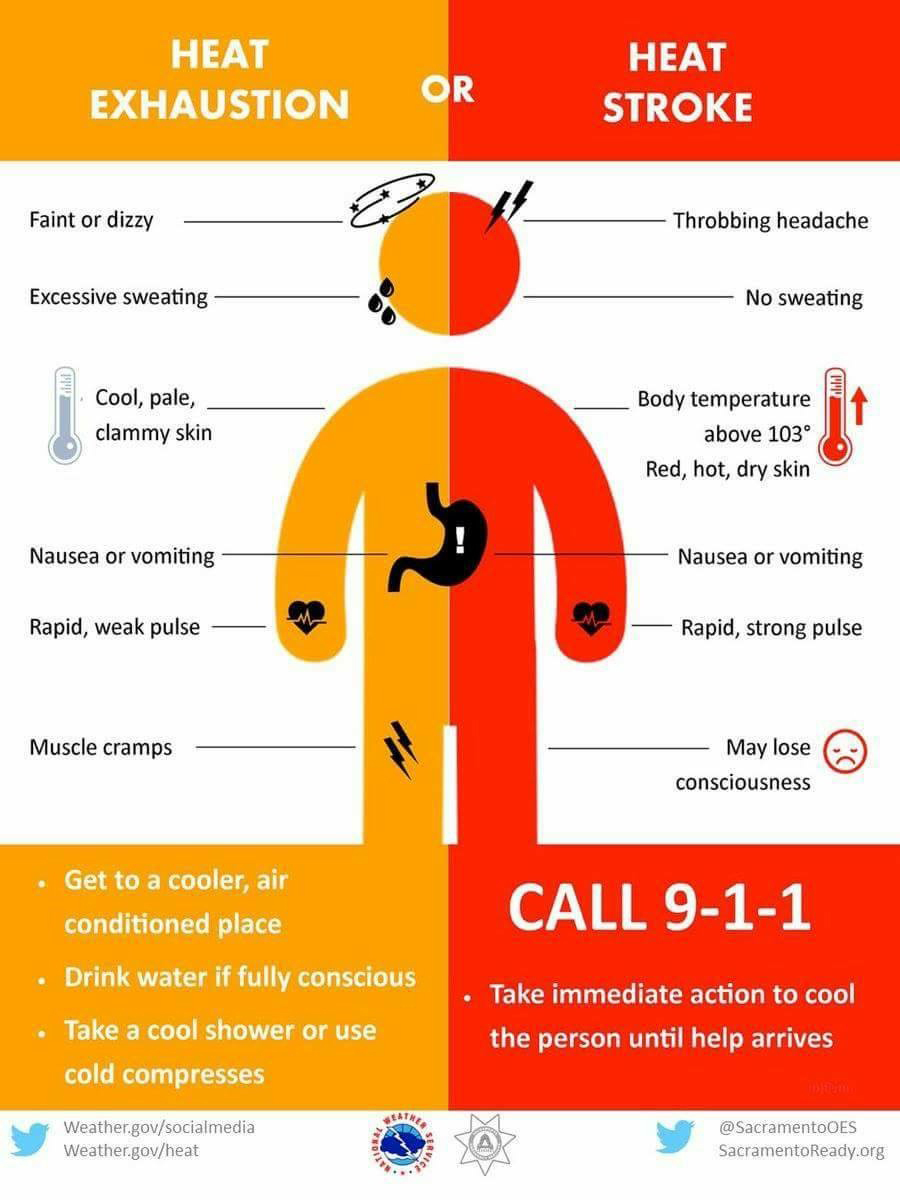 Heat Stroke: Know the Signs
Heat Stroke: Know the Signs
Pflugerville Fire Dept./Travis County ESD No. 2
During hot and humid weather, your body has a harder time cooling. When the body heats up too quickly to properly cool itself – or when too much fluid/salt is lost through sweating or dehydration – the victim may suffer heat exhaustion or heat stroke which is very serious. Below are tips on preventing heat stroke, recognizing its symptoms, and first aid. And remember: never leave kids, pets, or disabled adults alone in parked cars … not even for a few minutes! Have a safe and enjoyable summer everybody.
PREVENTING HEAT STROKE
• Slow down! Reduce, cancel or reschedule strenuous activities until the coolest time of the day
• Even if you don’t feel thirsty, proactively bring and drink plenty of water (not very cold) or other non-alcoholic, decaffeinated fluids
• Prevent sunburn through sunscreen, sunhats, and minimizing direct exposure to the sun; a sunburn reduces your body’s ability to cool down
• Dress in lightweight, loose-fitting, light-colored clothing to reflect heat and sunlight
• Eat light, cool, easy-to-digest foods such as fruit or salad
• Take a cool bath or shower
• Spend time in air-conditioned locations
• When the room temperature is hotter than 90°, don’t direct the flow of portable electric fans toward you because the dry, blowing air may further dehydrate you
HEAT STROKE SYMPTOMS
•Altered mental state or confusion
• Hot, red, dry, or moist skin
• One or more of these symptoms: dizziness, throbbing headache, nausea, shallow breathing
• Rapid and strong pulse
• Fainting or loss of consciousness
• Body temperature 103°F or greater
FIRST AID FOR HEAT STROKE
• Heat stroke is a severe medical emergency! Call 9-1-1 or get the victim to a hospital immediately
• Get to a cooler setting, preferably air-conditioned
• Do not give fluids
• Reduce body temperature with cool cloths or a bath
• Use a fan only IF the heat index is BELOW the high-90s